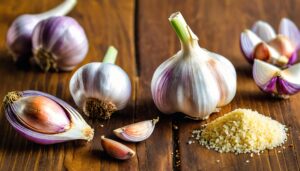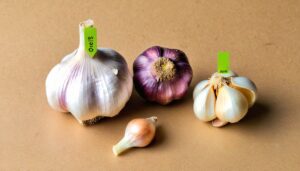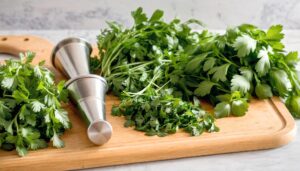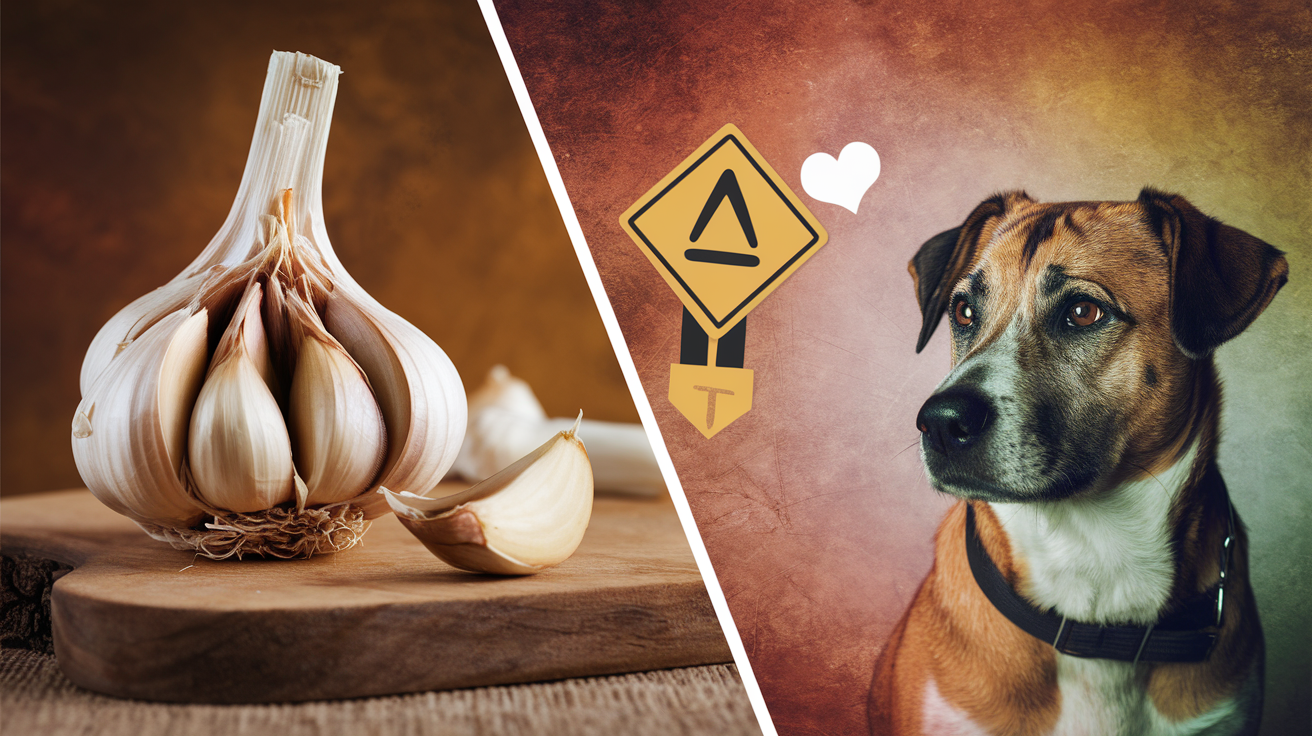Introduction
Garlic is a popular seasoning known for its distinctive flavor and numerous health benefits in humans. It has been used for centuries in various cuisines and is often praised for its ability to enhance the taste of dishes. Garlic contains several compounds that contribute to its medicinal properties, making it a staple in many households. However, while garlic may be a culinary favorite for people, its effects on pets, particularly dogs, warrant careful consideration.
Many pet owners wonder if sharing a bit of garlic from their meals is safe for their furry companions. Garlic consumption in dogs has become a topic of interest, especially as it is sometimes suggested for its potential health benefits, such as repelling fleas and promoting overall well-being. However, the reality is more complex. It is essential to understand how garlic interacts with a dog’s body and the potential implications of incorporating it into their diet.
Recognizing the risks and safety concerns associated with garlic consumption in dogs is crucial for any pet owner. While small amounts of garlic might not cause immediate harm, excessive consumption can lead to toxicity and various health issues. This article will delve into the impact of garlic on dogs, helping owners make informed decisions about what they feed their pets while ensuring their health and safety are prioritized.
What is Garlic?
Allium sativum, the scientific name for garlic, is a bulbous plant that is a member of the onion family. It has been used for centuries, both as a flavorful ingredient in various dishes and for its medicinal properties. In cooking, garlic is prized for its strong, pungent flavor, which enhances a wide range of recipes—from savory soups and sauces to marinades and dressings. Fresh garlic cloves can be minced, crushed, or roasted, while powdered garlic is a convenient seasoning option. Its versatility makes garlic a staple in kitchens worldwide, often featured in cuisines ranging from Italian to Asian.

Nutritionally, garlic is packed with essential compounds that contribute to its health benefits. One of the most notable components is allicin, which is formed when garlic is crushed or chopped. Allicin is known for its antimicrobial and anti-inflammatory properties, making garlic a popular natural remedy for various ailments. In addition to allicin, garlic contains other beneficial compounds, such as sulfur compounds, vitamins B6 and C, manganese, and selenium. These nutrients work together to promote cardiovascular health, boost the immune system, and provide antioxidant support. While garlic is beneficial for humans, its effects on pets, particularly dogs, can be quite different.
The Impact of Garlic on Dogs
Dogs metabolize substances differently than humans, which can significantly influence how they respond to various foods, including garlic. While garlic can provide health benefits to humans, it contains compounds that can be toxic to dogs. Specifically, dogs are more sensitive to thiosulfates found in garlic, which can cause oxidative damage to their red blood cells. This sensitivity means that even small amounts of garlic can lead to adverse effects on our canine companions, making it essential for pet owners to be cautious about including it in their dogs’ diets.
Common symptoms of garlic toxicity in dogs can vary, depending on the amount consumed and the individual dog’s sensitivity. One of the most immediate signs is gastrointestinal upset, which may manifest as vomiting, diarrhea, or stomach discomfort. As the toxicity progresses, dogs may experience lethargy and weakness, indicating a more severe reaction. In some cases, garlic can lead to hemolytic anemia, a condition where red blood cells are destroyed faster than they can be produced. Symptoms of anemia include pale gums, rapid breathing, and an increased heart rate. Recognizing these symptoms early is crucial, as prompt veterinary attention can prevent further complications and ensure your dog’s health and well-being.
Safe vs. Unsafe Amounts of Garlic
Understanding What Constitutes a Toxic Dose
Knowing how much garlic is poisonous for dogs is essential to protecting them. Research indicates that a dose of 15–30 grams of garlic per kilogram of the dog’s body weight may be harmful. To put this in perspective, the average weight of a single garlic clove is 3–7 grams. This means that a small dog could experience toxicity after consuming just one or two cloves, while larger dogs might tolerate a bit more. However, individual reactions can vary, and it’s important to recognize that even small amounts can lead to adverse effects, particularly in sensitive dogs. Therefore, it’s best to completely refrain from offering garlic to dogs.

Factors Influencing Toxicity
Several factors can influence how garlic affects a dog. Size and breed are significant considerations. Smaller breeds generally have a higher risk of toxicity due to their lower body weight. For example, a small Chihuahua may experience symptoms after ingesting a fraction of what a larger breed like a Great Dane could tolerate. In addition to size, individual sensitivities play a critical role. Just as some humans may have allergies or intolerances to certain foods, some dogs may react adversely to garlic even in small amounts. Factors like age, health status, and genetic predispositions can also affect a dog’s ability to process garlic, making it essential for pet owners to be aware of their dog’s specific needs.
Comparison of Garlic with Other Toxic Foods for Dogs
Garlic is not the only food that can be harmful to dogs; other common items can pose similar risks. For instance, the thiosulfate concentration of onions, a member of the same family as garlic, makes them hazardous to dogs. Like garlic, onions can cause oxidative damage to red blood cells, leading to anemia. Similarly, grapes and raisins can lead to acute kidney failure, while chocolate is toxic due to theobromine, which dogs cannot metabolize efficiently. Understanding the range of toxic foods available helps reinforce the importance of carefully managing a dog’s diet to avoid unintentional exposure to harmful substances.
Alternatives to Garlic for Flavoring Dog Food
Safe Herbs and Seasonings for Dogs
For pet owners looking to enhance the flavor of their dog’s meals without the risks associated with garlic, there are several safe and healthy alternatives. Parsley is an excellent option, known for its ability to freshen breath while adding a mild flavor. Basil is another dog-friendly herb that not only enhances taste but also provides antioxidants and can aid digestion. Cilantro and thyme are also safe options that can add flavor without compromising your dog’s health. Incorporating these herbs into your dog’s diet can offer variety and flavor while avoiding the dangers of garlic.

Tips for Adding Flavor Without Risking Health
When seeking to add flavor to your dog’s food, it’s essential to choose safe options and be mindful of portions. Fresh vegetables like carrots, peas, and green beans can be mixed into meals for added flavor and nutrition. Additionally, using low-sodium broth (ensure it contains no onion or garlic) can enhance taste without adding harmful ingredients. Plain yogurt can also serve as a tasty treat, providing probiotics that support gut health. Always introduce new ingredients gradually, and keep an eye on your dog’s reaction to ensure their digestive system can handle the changes.
What can I Do if my Dog Consumes Garlic
Immediate Steps to Take
If you suspect that your dog has consumed garlic, it’s important to act quickly. First, assess the amount consumed and whether your dog is showing any symptoms. If the consumption was recent, inducing vomiting might be beneficial to prevent further absorption of the toxins. But you should only do this with a veterinarian’s supervision. It’s vital to monitor your dog for any signs of distress, such as vomiting, diarrhea, or lethargy.
When to Contact a Veterinarian
Regardless of whether your dog is displaying symptoms, it’s crucial to contact a veterinarian as soon as you realize they have ingested garlic. Providing information about the amount consumed and any symptoms observed can help the vet determine the appropriate course of action. If your dog starts to show signs of gastrointestinal upset, weakness, or unusual behavior, seek immediate veterinary care.
Potential Treatments for Garlic Toxicity
Upon arriving at the veterinary clinic, the treatment for garlic toxicity may involve administering activated charcoal, which can help limit the absorption of toxins in the gastrointestinal tract. In more severe cases, dogs may require intravenous fluids to maintain hydration and support kidney function, particularly if they are experiencing anemia or dehydration. Treatment may also include blood tests to assess the level of red blood cell damage. With prompt and appropriate care, many dogs can recover fully, reinforcing the importance of being vigilant about what they consume.

Conclusion
In conclusion, while garlic is a common seasoning for humans, it poses significant risks to dogs, with even small amounts potentially leading to toxicity. Pet owners should avoid feeding garlic to their furry friends and explore safe alternatives like parsley and basil to enhance their meals. Consulting with a veterinarian or pet nutrition expert is essential for ensuring a balanced and safe diet tailored to each dog’s unique needs. With the right precautions, pet owners can help maintain their dog’s health and well-being.
FAQs
Can a small amount of garlic be safe for dogs?
No, it’s best to avoid garlic entirely, as even small amounts can be harmful to some dogs. Individual sensitivities vary, and there is no safe threshold.
What should I do if my dog accidentally eats garlic?
Even if your dog seems fine, keep an eye out for symptoms and call a vet right away. It’s imperative to act quickly to avoid major health problems.
Are there any health benefits to garlic for dogs?
While garlic has some health benefits for humans, it does not provide the same advantages for dogs and poses significant risks, so it should be avoided.
What are some safe alternatives to garlic for flavoring my dog’s food?
Safe alternatives include parsley, basil, turmeric, and a variety of vegetables like carrots and peas. Low-sodium broth can also enhance flavor without the risks.
How can I tell if my dog is experiencing garlic toxicity?
Symptoms can include vomiting, diarrhea, lethargy, weakness, and pale gums. If you notice any of these signs after potential garlic ingestion, seek veterinary care immediately.
